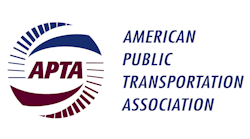Public transportation like bus and rail systems are a necessary part of life, especially in urban cities. However, the vehicles of public transit systems are confined spaces that can result in close contact and potential increased transmission of infectious diseases. For transportation department leaders, safety is the top priority, including mitigating viral contamination on public transit vehicles.
Here are four strategies transportation departments and municipal transit providers can use to reduce viral transmission on mass transit systems.
Improve ventilation
On public transportation where crowding is a persistent problem, proper ventilation is one of the best defenses against the spread of viral infections.
Investing in buses that have air conditioning systems that allow for 50 percent ventilation, which mixes outdoor air with recirculated air, is always preferable to recirculation-only buses that continuously cycle through the air that is currently in the vehicle.
According to the American Public Transportation Association (APTA), “Air circulating through subway cars and buses is typically replaced with fresh air close to 18times an hour, more frequently than the sixto eight times recommended for restaurants, the five to six - times recommended for classrooms and the 12 times recommended for airborne isolation rooms in medical facilities.”
When new vehicles are not an option, making use of the ventilation features of a bus such as windows and trapdoors is another strategy for improving air circulation and ventilation. By leaving windows and doors open throughout transit or during the entire duration of route stops and traffic light holds, bus conductors can prevent contaminated air from recirculating for too long within the vehicle. Air purification systems or ventilation fans can also be installed for hermetically closed vehicles. With the help of carbon dioxide sensors, drivers can be alerted to when ventilation fans may need to be activated.
Reduce crowding and contact
Another way to reduce viral spread and increase airflow on mass transit is to reduce crowing on vehicles to the extent the utility is allowed and encourage social distancing when possible.
While station and vehicle personnel can enforce transit policies on vehicle maximum occupancies, transit officials can take further measures to increase vehicle availability during peak times with high demand and offer price systems that incentivize passengers to shift to off-peak travel times. This can encourage greater physical distancing among riders, increasing proximity to avoid communal viral spread.
To further limit physical contact, transit providers should consider offering plexiglass barriers for riders and vehicle operators and contactless payment options for ticket transactions such as online pay, tap-to-pay and Apple Pay.
Provide supplies
In a study from The American Journal of Tropical Medicine and Hygiene, an analysis of 196 countries found that places where masks weren’t recommended saw a 62.1 percent weekly increase in COVID-19deaths per capita compared with a 15.8 percent growth in countries with guidelines supporting mask wearing.
While only possible at an additional cost to transit officials, providing sanitation and protection supplies to patrons is another great way to prevent viral spread and stop the transmission of infections. Transit providers can consider installing mask and hand sanitizing stations at bus or train stops and within transit vehicles for use by passengers as they wait or as they enter and exit their respective bus or train.
According to the CDC, “Sanitizers with an alcohol concentration between 60 to 95 percent are the most effective at killing germs”. Wipe stations are another option for both hand and seat or surface decontamination - be sure that the proper disposal bins are provided wherever a wipe or mask station is available.
Invest in decontamination technology equipment
APTA states there are four types of viral transmission
- Community spread
- Respiratory droplets
- Aerosol
- Surface
Transit providers should enforce regular cleaning and disinfecting schedules for stations and vehicles. While personal protective equipment and proper ventilation can help manage community spread and respiratory droplets, it can take further interference to manage aerosol and surface transmission of viruses.
Investing in decontamination technology equipment such as foggers, electrostatic sprayers, thermal disinfectors and UV technology can greatly reduce the time spent on vehicle decontamination and maintenance, as well as improve efficacy. Some technologies are able to clean spaces up to 5,000 cubic feet in just under 30 minutes.
Americans took 7.1 billion trips on public transportation in 2023, a 16 percent increase versus 2022. Transit providers and public transportation department officials have a responsibility to keep people safe while using mass transit systems. Through improved ventilation, reduced crowding, proper supplies and thorough decontamination, viral spread can be mitigated to save countless lives throughout the nation.



